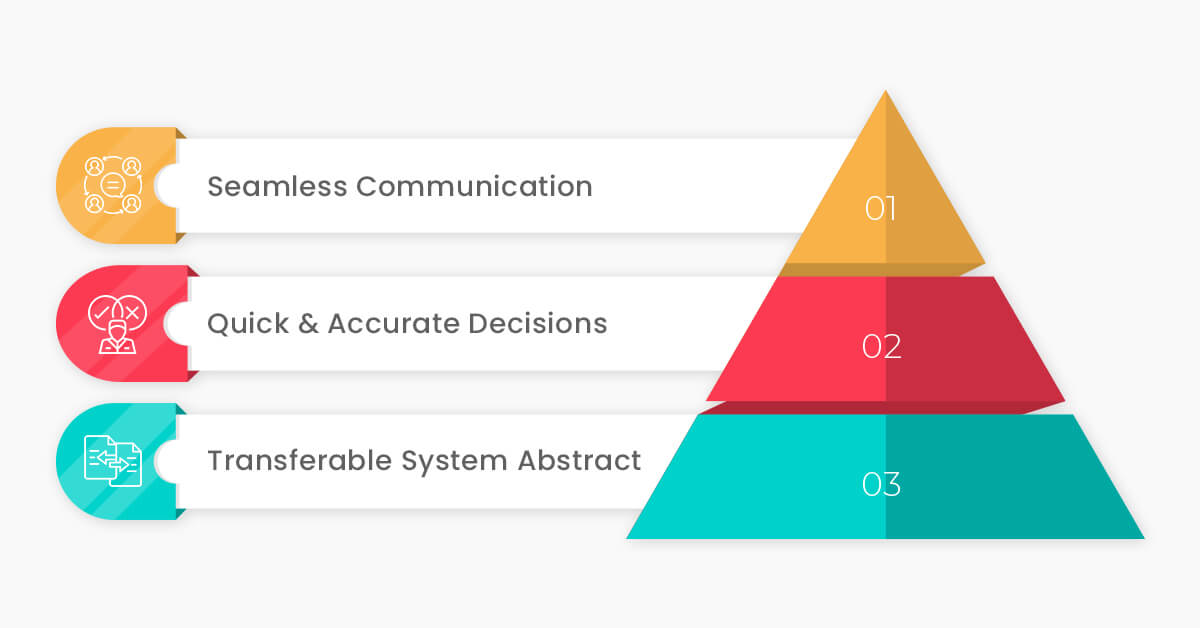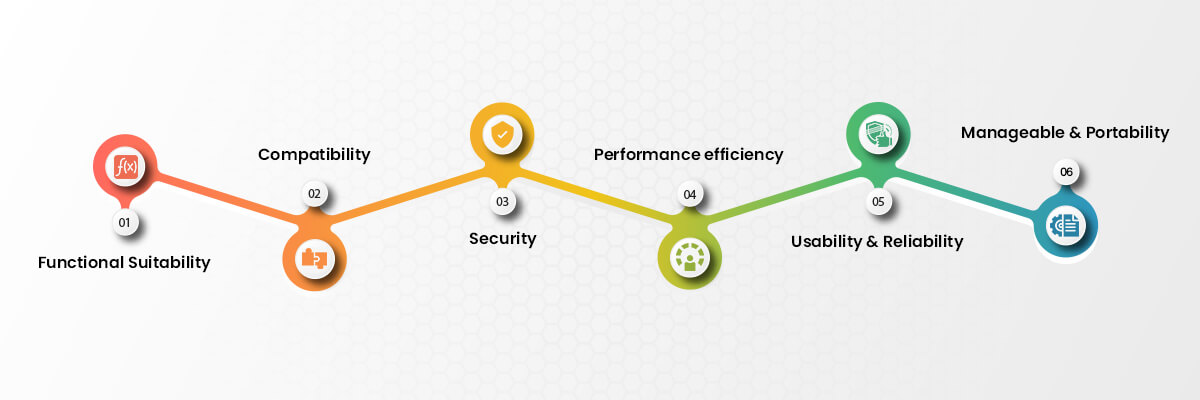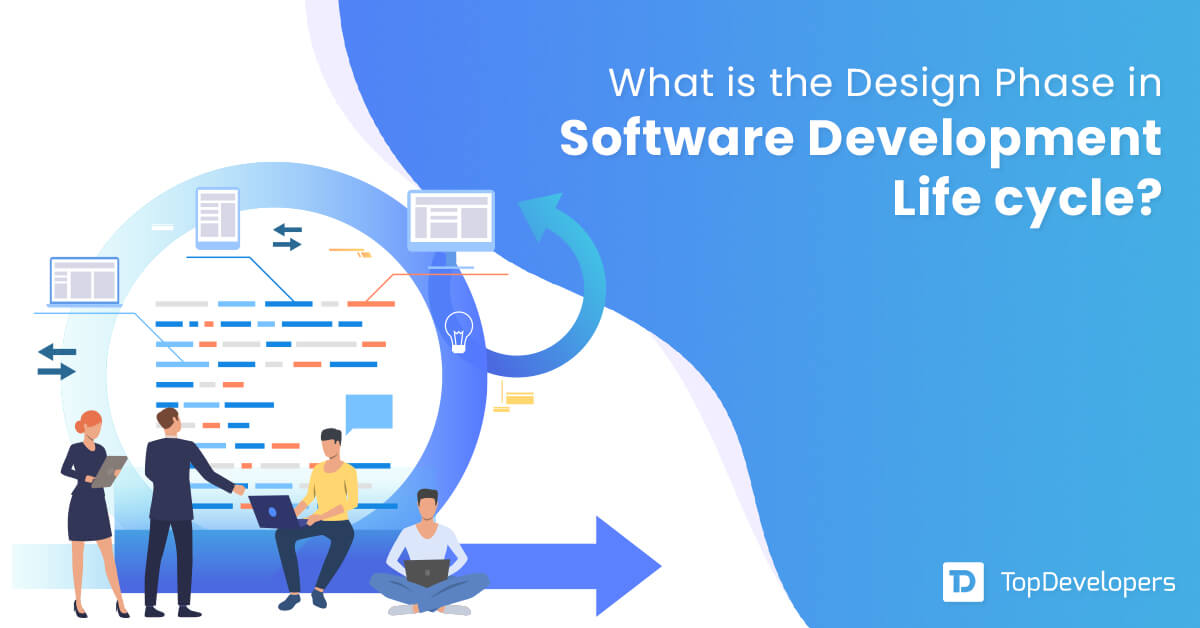
What is software architecture? The term has been quite broad and most have no concrete answer to this umbrella term. In fact, for many buyers, it is simply how software development happens along with some set of rules. Now, this is an important piece of information you must have before hiring the top software development company. Here we help you decode this vague question and show you why your software development project sincerely needs an optimum architecture.
In layman’s terms, the model of a software system that represents the most important elements and their relations to each other is called software architecture.
The best architecture in software development denotes the methods and techniques of software developers and project managers to design, build, and even deploy customized software tools as per predefined objectives. You may consider raising a building where components are concrete, masonry, steel, beams, and other construction materials; here, it is a software with all the components required to build it such as servers, platforms, interfaces, and stakeholders’ inputs. It will serve as the software architecture components for the process of software development.
Ultimately, you need to understand the software development process before you bring in dedicated software development team into your project. Because it is always important to do homework prior to dealing with software development companies.
Table of Contents
- What are the objectives of having the best software architecture?
- How does the architecture play an important role in software development?
- What are the primary components of the best software architecture?
- Software architecture patterns and how to choose the best software architecture?
- Quality attributes of the best software architecture
What are the objectives of having the best software architecture?
There are many benefits from software development to different industries provided the digital tool complies with the business objectives and work as per the scope defined by a buyer. Hence, it is of paramount importance that the best software architecture is in the right place at the right time after the project kickstarts. After this, everything is drafted and documented by professional experts because neat and unambiguous documentation in software development outsourcing is the backbone of any successful project.
Here are the main objectives of creating software architecture –
- Jotting down and detailing of organization and structural approach to the software system without delving deep into deployment and implementation
- Bifurcation of functional and non-functional requirements through a quantitative and qualitative approach
- Building a basic yet foolproof foundation of information system that would cater to all the functional requirements of the software to be built
- Seamless communication and information sharing of architectural and components setup
- Pictorial presentation of all the flows and processes of functional needs of users and showing the purpose of the digital product
- System attribution and functional optimization of software to be built
How does the architecture play an important role in software development?
Any software development guide would teach you dos and don’ts about outsourcing. Nevertheless, you need to have an expert’s opinion on software architecture development and approval. Fundamentals of software architecture tell us its importance in the software development life cycle and even beyond it. While there are many cogent reasons to have the right software development architecture in place, here are the three most important factors that make this entity on the top list of any buyer and service provider –
Seamless communication: the right software architecture showcases a common system abstract that most, if not everyone, stakeholders of the project can use as primary means of consensus, negotiation, knowledge transfer, and mutual understanding – all through unified communication channels.
Quick and accurate decisions: an accurate software architecture would manifest the early design decision about the systems and such actions in advance could positively affect the overall software development life cycle.
Transferable system abstract: intellectually and strategically defined software architecture shall neatly define how software building components and elements work together and this model shall work across the systems; hence, the architecture could be implemented in other systems showing similar characteristics and functionalities. Ultimately, evolutionary prototyping can give an idea about larger-scale reusability.
What are the primary components of the best software architecture?
Software development outsourcing requires a perfect documentation to assure a quality product. Building architecture is a part of development plan. As mentioned earlier, an ideal software architecture portrays how the internal and external components of the software system must be brought together, and how there could be flawless communication between them. Also, software architecture models also outline the constraints the entire system could have. Here are the primary software architecture components –
The pattern of architecture
The architectural pattern shall clearly define the components at their granular levels; for instance, how big or small the component could be depending on the complexity of the project – a service-oriented architecture would have bigger independent components as compared to microservices. Hence, the application type, objectives, and dependencies, the architectural design pattern change and so do the digital product development.
Quality attributes
With the advent of the latest technologies, software solutions are getting more complex than ever which, in turn, require foolproof planning and strategy in place. Quality attributes such as the tool’s flexibility, scalability, adaptability, and the like help software developers and stakeholders know its whereabouts and they are assured of fewer escalations during the software development life cycle.
System interaction
Architecture in software development assures smoother and seamless communication between different components so as to assure the developers that they are, at any point of software development, not digressing from the predefined scopes and business objectives stated by a buyer. Different APIs, interfaces, and other entities in programming develop a powerful messaging mechanism that keep everything on the same board.
Software architecture patterns and how to choose the best software architecture?
There is no one solution that fixes all concerns. Bursting the software development myths, there is no one algorithm that gets you the right software architecture pattern for all of your requirements. Every project has unique feature and goals; hence, most software architects would blend several patterns through best practices and build a customized solution that shall cater to your business goals. For instance, if you are to have an online retail store that is likely to handle 5000 sales per minute shall have entirely different architecture than the one that would have hardly a dozen sales a minute.
Here are a few common software architecture patterns with their benefits so that you can choose the best software architecture for your project.
Layered architecture
Also known as n-tier, the layered software architecture is undoubtedly the most common type of pattern, and they are used in WordPress, Drupal, and some other frameworks. In this, the bottom layer is software’s raw data, the data that your products are likely to offer or the content you want on displays. The raw data is then converted into special formats as per your business logic.
Benefit: The biggest benefit of layered software architecture is its layers that house logical sense and hence easy for developers to understand and grasp. Testing such layer is not a tough nut to crack and you can mock the information for testing.
Event-based architecture
Unlike many other programs that spend CPU cycles for some action to happen (say, a web server assures that the socket remains open whenever the client wants a webpage and UI shows itself and waits for user’s action). Now, the event-based software architecture works on a central unit that handles all actions and then forwards all information to the concerned handlers.
Benefit: The biggest benefit of event-based architecture is its ability of being tested. The architecture lends itself neatly for testing and you can have your customized environment for the same to mock the coming event and authenticate application system’s change in state for your own objective. Hence, this type of software architecture is mobile and web developers’ apple of eye today as it gives a sheer sense of the front-end.
Microkernel architecture
Microkernel architecture has immense power to extend itself through various characteristics and features. For instance, if you take Notepad, its basic function is open the file, edit, and save. Now, the beauty of microkernel architecture is that software developers and programmers could write plugins to augment the features of Notepad. Hence, the original software would have better functionalities and features. In our example, the Notepad can have a word count or a grammar or spelling checker.
Benefit: The structure of the software system can be enhanced through microkernel architecture as it can improve the overall functionalities of software project development. Sticking to the fundamentals of software architecture, this particular type can expand the software system’s scalability.
Microservice architecture
Do you know Amazon witnesses 200 million unique visitors every month, that too from the US only. If that is not enough, each visitor keeps on browsing several pages and products throughout the visit. Hence, Amazon has to have an incredible computing power to fulfil its users’ demands. Now, Amazon does not run on a single server lying in some backyard! There are thousands that make our shopping experience unparalleled. Now, each identify section or component on the page are spilt into small backend services called microservices. In layman’s words, using microservice architecture, you can have hundreds of servers handled marvellously without any hassles.
Benefit: The microservice architecture can scale quite fast and hence it is easy to build multiple teams (sales, review, and so on). Scaling up and/or down the unit is possible; hence, Amazon, Microsoft, and even Apple use microservices under one roof. Microservice, quite opposite to its nomenclature, can handle mammoth data and most complex portals with ease.
Space-based architecture
One of the major concerns about applications is that they have a single data source. A website may store all the user database despite the front-end having load balancing capacity to build and render webpages quicker. Still, there could be a potential issue with front-end servers accessing that single database.
Benefit: The space-based architecture helps you handle enormous amount of data and inputs. As a result, software app developers can address to lot of events at once without bothering about the loads.
Quality attributes of the best software architecture
Clients often check technology stacks for software development while selecting the software development company to hire. Because, stacks play a major role in building a customized software system. Nevertheless, before the project kick starts, it is important to build a standard software architecture with quality attributes.
Quality attributes mean software’s characters’ which help developers and programmers enjoy smooth ride throughout software development life cycle process. They can build a quality and foolproof digital product that aligns to the predefined objectives and scopes. Here are a few common quality attributes of the architecture –
Functional suitability: The functional suitability should cater to business objectives and users’ needs.
Performance efficiency: How is the performance of the software? How long does it take to launch and run it on devices successfully.
Compatibility: It explains how well and easier the software tool exchanges information with other (existing) systems, products, servers, or components.
Usability: This explains the navigation and usability of the software. It should be easy and user-friendly.
Reliability: The system should be reliable even in hard times (such as many queries at the same time). The overall experience of the software shall build the reliability factor to the users.
Security: Security has been the greatest concern of today’s entrepreneurs and users. The system should build robust security measures to run smoothly and win trust.
Manageable: The software system should be easily manageable for modifying, testing, and improving the software product in the future. In other words, it should be scalable enough to adapt the future changes depending on the users’ and market needs.
Portability: With more and more technologies emerging every single hour, portability has been a bigger concern for enterprises. The software system should be portable enough to adapt to different environments including several operating systems.
Hire Top Developers to Create the Best Software Architecture
Summing up the subject, hiring remote developers with assured best software architecture would make your business deal successful. Bugs in code and substandard product shall land you in trouble as you would waste hard earned money as well as precious time to build your enterprise. On the other hand, if choosing the best software architecture for your project, it shall render user-friendly, flawless, and up-to-the-mark software solution.
 Avantika Shergil
| Oct 27, 2022
Avantika Shergil
| Oct 27, 2022
Avantika Shergil is a technology enthusiast and thought leader with deep expertise in software development and web technologies. With over 8 years of experience analyzing and evaluating cutting-edge digital solutions, Avantika has a knack for demystifying complex tech trends. Her insights into modern programming frameworks, system architecture, and web innovation have empowered businesses to make informed decisions in the ever-evolving tech landscape. Avantika is passionate about bridging the gap between technology and business strategy, helping businesses build customized software and website, and understand about different tools to leverage effectively for their ventures. Explore her work for a unique perspective on the future of digital innovation.







